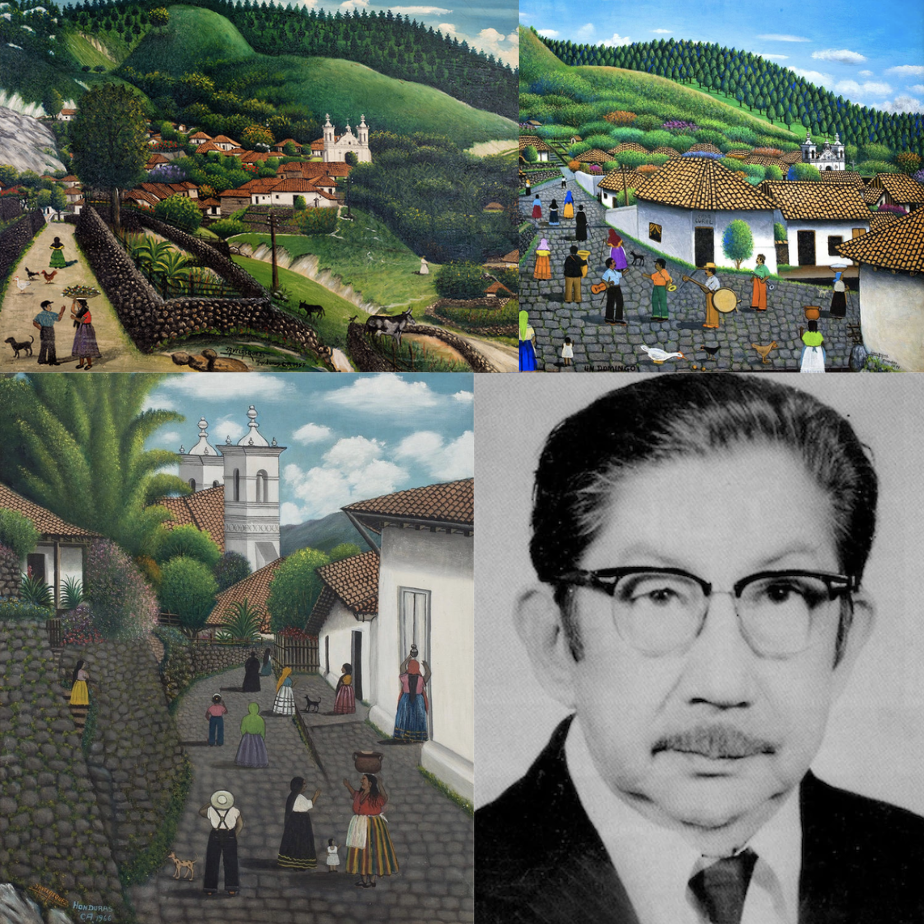Central American Art
Artwork by Chubasco from laberinto projects.
laberinto projects
laberinto projects is an arts, culture, and education platform that fosters art practices, legacy preservation, social inclusion, and dialogue in El Salvador, Central America, and its diaspora.
Artwork by Armando Campos.
Ceramica de los Ancestros
Ceramica de los Ancestros was a bilingual exhibition at the National Museum of the American Indian (NMAI) on Central America’s ancestral heritage with a selection of more than 150 objects.
La Horchata Zine
La Horchata Zine is a seasonal publication creating space for people of Nicaraguan, Honduran, Guatemalan, Panamanian, Costa Rican, Belizean, and Salvadoran ancestry to display their work.
Poster by Veronica Melendez.
The Nib
Many from El Salvador insist that it’s the only Central American country without Black people. But Breena Nuñez is asserting their Afro-Salvadoran identity in this vibrant and informative comic.
Central American Artists
José Antonio Velásquez
José Antonio Velásquez (1906 – 1983) was a Honduran artist. His work depicts typical Honduran street scenes, distinctly stylized and frequently portrayed from a high vantage point and rendered in rich colors endemic to Central American culture. He is often lauded as among the first American Primitive Painters. Antonio Velásquez contributed to the Regionalist Movement.
Fernando Llort
Fernando Llort Choussy (1949 – 2018) was a Salvadoran artist, often dubbed "El Salvador's National Artist.” Indigenous cultures heavily influence Fernando's art. He could mix modern ideas with a naive drawing style in multiple mediums.
Paula Nicho Cumez
Paula Nicho Cumez (b.1955) is named by some as Guatemala’s most important Maya woman living artist. Cumez is inspired by Mayan tradition and culture and focuses on expressing the context of native women’s experience in her artwork; additionally, Cumez was inspired by the Popol Vuh. Check out our lesson Leaving Home: Socratic Dialogue with Mayan Art.
Pen Cayetano
Pen Cayetano (b. 1954) is one of Belize's most distinguished artists and musicians. He is one of the leading cultural revivalists and ambassadors for the Garinagu. His favorite medium is of oil on canvas with genres of modern art and contemporary realism.
Armando Morales
Armando Morales (1927 – 2011) was a Nicaraguan figurative painter considered one of the most important artists in his country’s history. Primarily depicting fruit still lifes, tropical landscapes, and the female nude, his paintings melded expressive handling with neutral tones and voluminous forms.
Guillermo Trujillo
Guillermo Trujillo (1927 – 2018) was a contemporary Panamanian artist best known for his paintings which meld Indigenous iconography, political themes, and Western European techniques. His work synthesized the styles of the many cultures of his country’s heritage in a contemporary form.
Francisco Amighetti
Francisco Amighetti (1907 – 1998) is considered one of the pillars of Costa Rican culture. He was also one of the most prolific and original Latin American artists. He was a specialist in the art of color xylograph. Amighetti’s art spans a variety of themes, including sexuality, death, and social commentary.
June Beer
June Beer (1935 – 1986 ) was a pioneering, self-taught Black feminist painter, poet, and revolutionary cultural worker from Bluefields, Nicaragua. Beer would meditate on Black and Caribbean Nicaraguan women’s subjectivities in the vibrant, tender portraits that comprise the bulk of her painterly oeuvre.
Kiara Aileen Machado
Kiara Aileen Machado is a contemporary artist born in Lynwood, California, who depicts and explores the construction of identity, familial lineage, intergenerational trauma, and culture in her work. She obtained her bachelor’s degree in painting and drawing from California State University Long Beach in 2018.
Machado has worked on murals in border towns calling attention to the violence these borders bring to communities, migration, and the environment. The murals have been between San Diego and Tijuana, Nogales, Arizona, and Nogales, Sonora, Mexico. She also co-facilitated a community-based mural in Siguatepeque, Honduras, and recently completed a mural in El Monte through the Summer of Solidarity residency with LAvsHate and MuralColors.
Her artwork has been seen in museums and galleries across the United States and has begun to show internationally, including in Florence, Frankfurt, Berlin, Paris, San Salvador, and Antigua. Her work has been acquired by the Hood Museum and Ulrich Museum.
Víctor Interiano
Víctor Interiano (he/him) is a Los Angeles-based Salvadoran artist and creator of Dichos de un bicho (Instagram), a social media platform and blog that examines life as Salvadoran diaspora in the United States through an intersectional analysis on systems of power and popular culture. The artwork below is shared with permission of the artist.
De Centroamérica a Westlake con amor (2015) by Víctor Interiano is a lyrical depiction in the style of Salvadoran artist Fernando Llort of the connection between the volcanoes, rain forests, and pueblitos of Central America to the the tall buildings and urban setting of Westlake-Downtown Los Angeles that became the new home for Central American diaspora.















